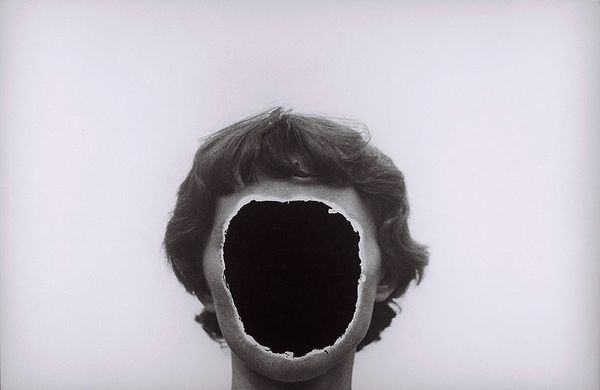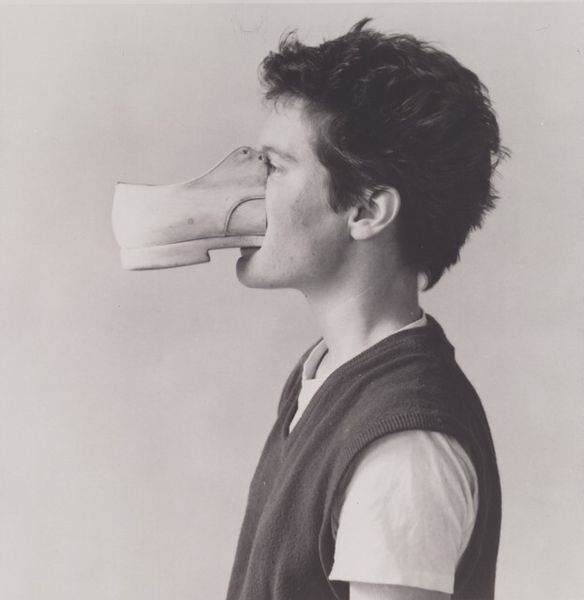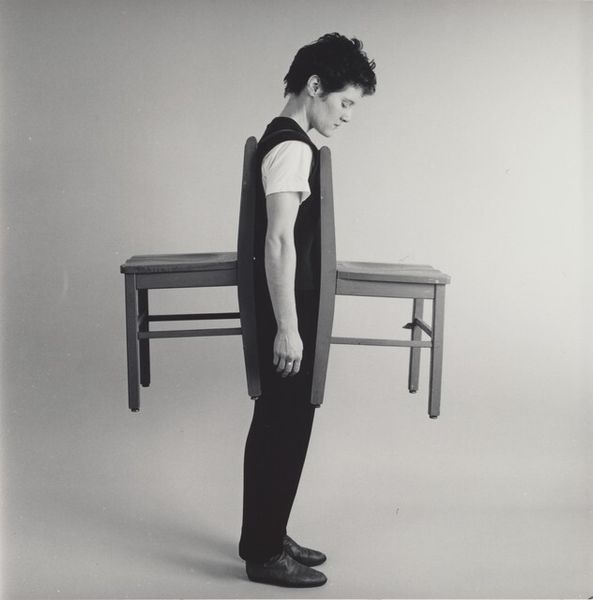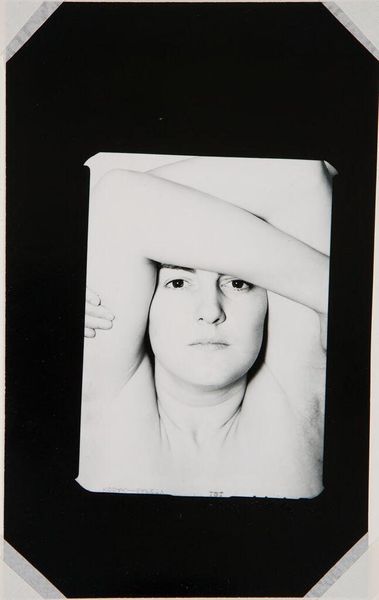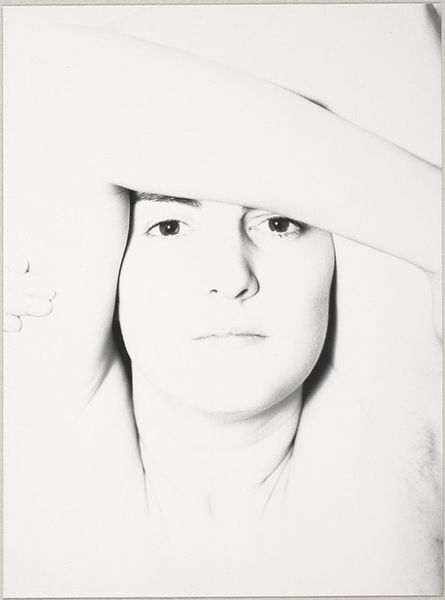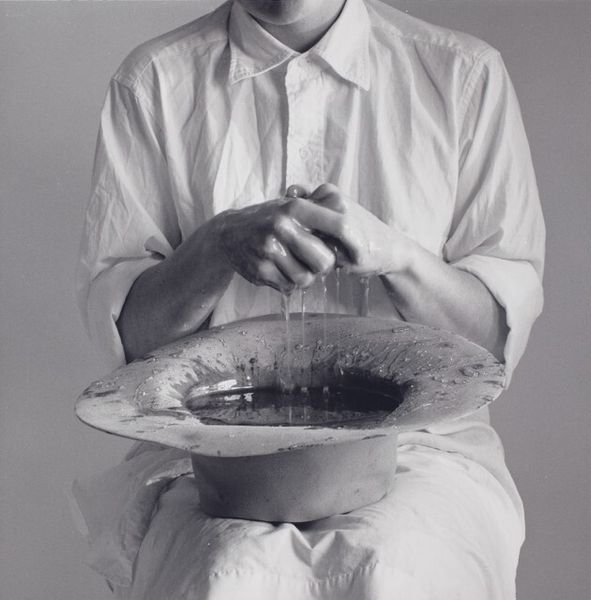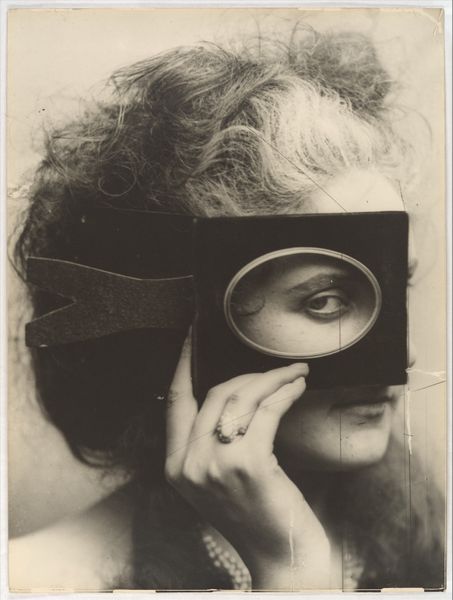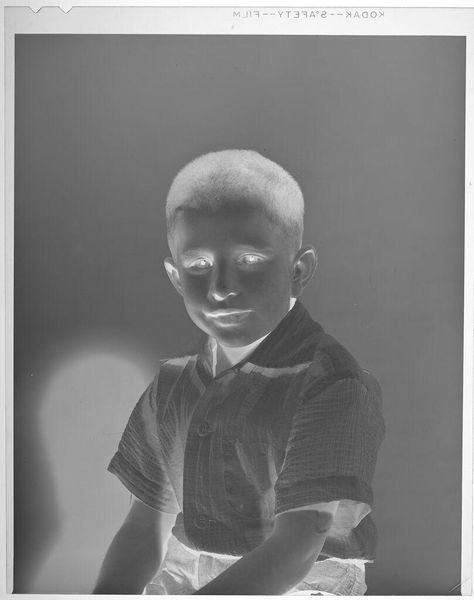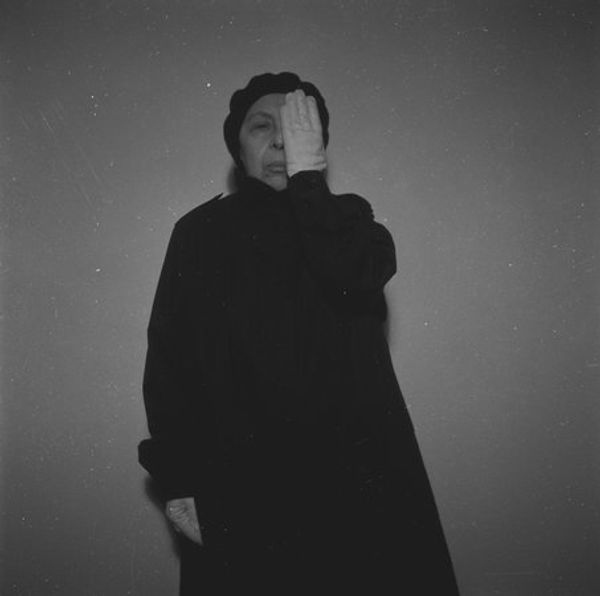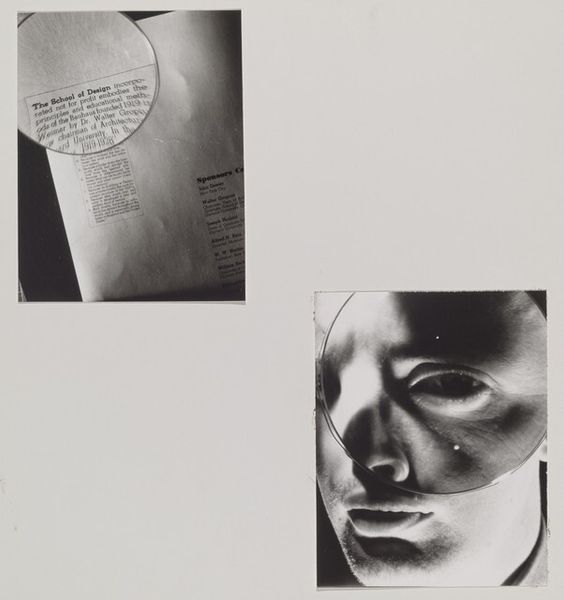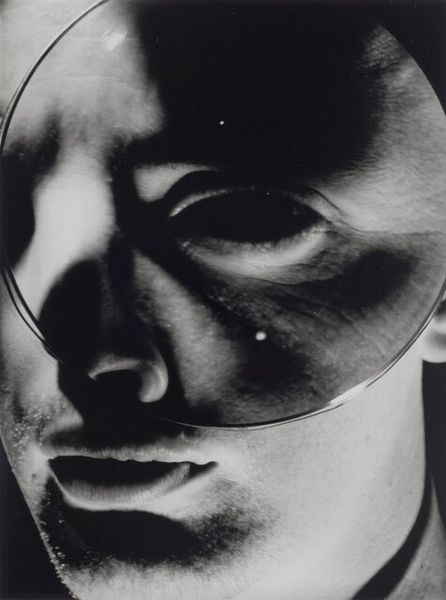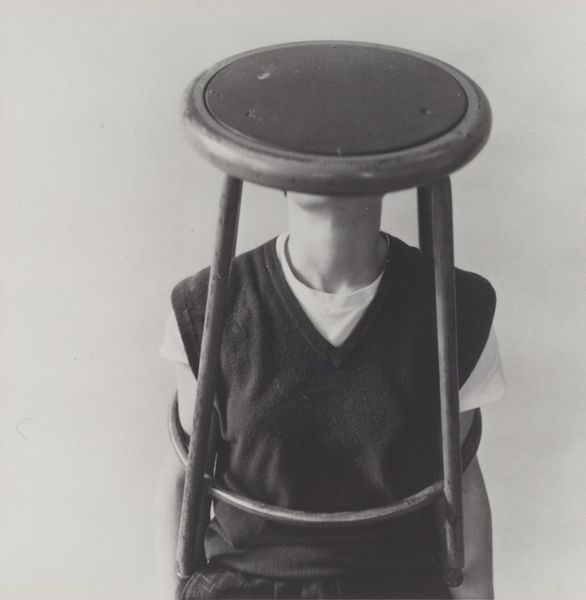
photography, gelatin-silver-print
#
portrait
#
conceptual-art
#
portrait
#
appropriation
#
black and white format
#
photography
#
black and white theme
#
black and white
#
gelatin-silver-print
#
identity-politics
Dimensions: image: 11 x 11 cm (4 5/16 x 4 5/16 in.) sheet: 25.3 x 20.2 cm (10 x 7 15/16 in.)
Copyright: National Gallery of Art: CC0 1.0
Editor: So, here we have Ann Hamilton’s gelatin-silver print, “body object series #9, stoveplate,” possibly from the mid-80s to early 90s. The starkness of the black and white and the way the plate obscures the face is a bit unsettling. How do you interpret this work, particularly its engagement with identity? Curator: I see it as a powerful statement on the construction of identity, particularly how societal roles and domesticity can both reveal and conceal aspects of ourselves. The stoveplate, an object deeply connected to the domestic sphere and historically associated with women's labor, acts as a mask, both hiding and highlighting the subject's gaze. Does this piece perhaps raise questions about gendered expectations within the domestic space for you? Editor: Absolutely, the stoveplate immediately made me think about domestic labor. The eye staring through the hole almost feels like a cry for recognition within that space. Curator: Exactly! And consider the title, "body object series." Hamilton seems to be intentionally blurring the lines between the human and the object, prompting us to consider how our bodies are perceived and used within capitalist systems. The act of obscuring the face can also be seen as a commentary on how individuality can be suppressed or distorted by societal pressures and how the domestic space itself can be a site of both comfort and oppression. What do you make of the gelatin-silver print choice for its medium? Editor: I guess the use of photography makes the scene look quite candid but old fashioned at the same time, which in return, may point at something perennial. It definitely adds to that feeling of unease. Curator: It amplifies that uncanny feeling, that tension between recognition and alienation. By using appropriation, the artist pushes us to analyze assumptions around identity and the gaze and engage with difficult intersectional realities. It's great that you picked up on this effect. Editor: That's fascinating. I never considered the broader implications of the domestic object. This really gave me a lot to consider, particularly regarding the historical weight behind everyday objects and their relationship to identity. Curator: Me too. By looking at everyday objects as mirrors reflecting identity, we become active agents in challenging existing norms.
Comments
No comments
Be the first to comment and join the conversation on the ultimate creative platform.
